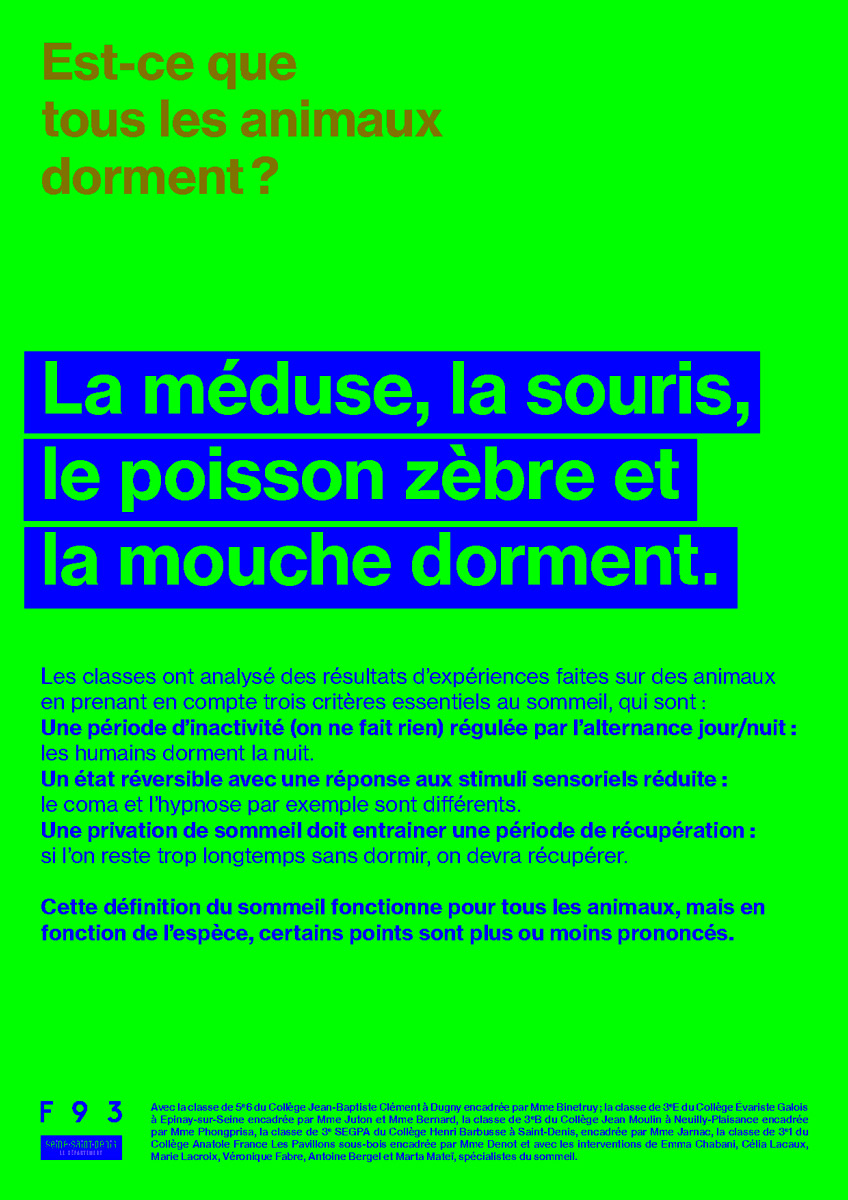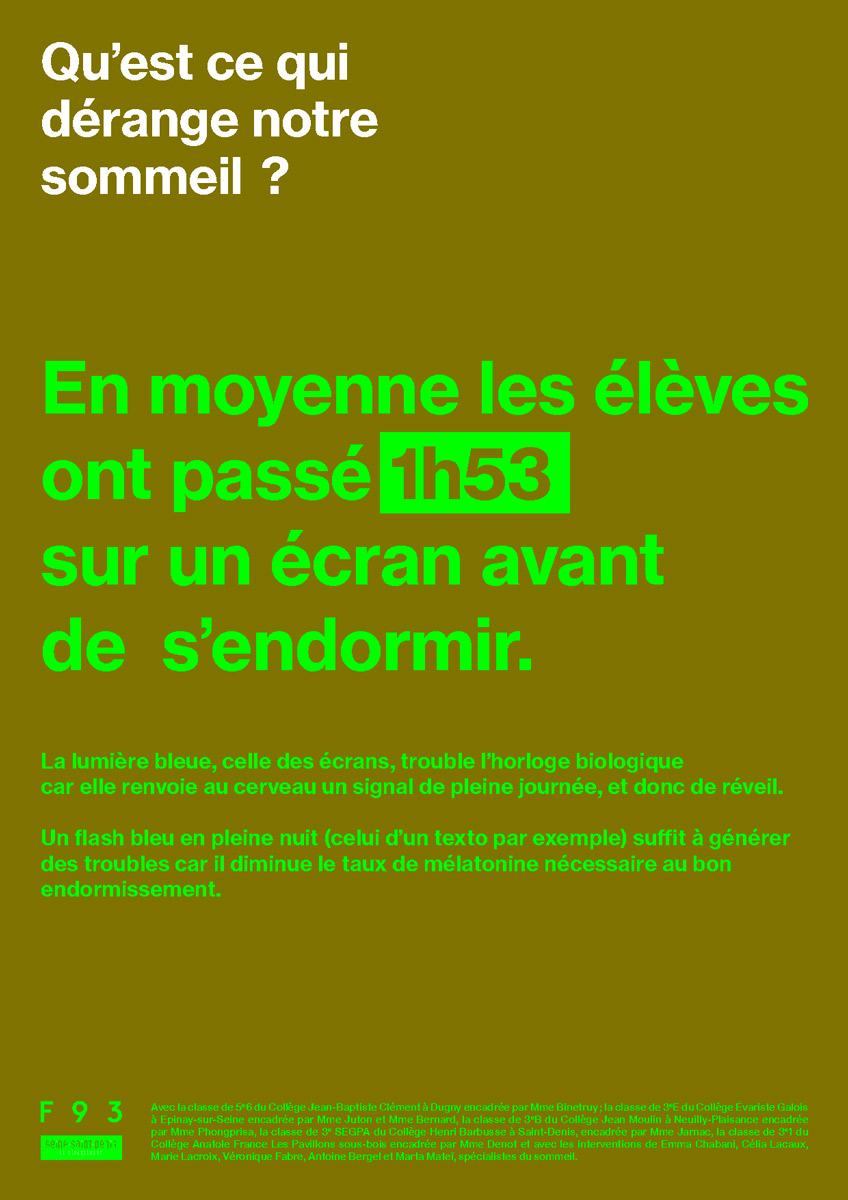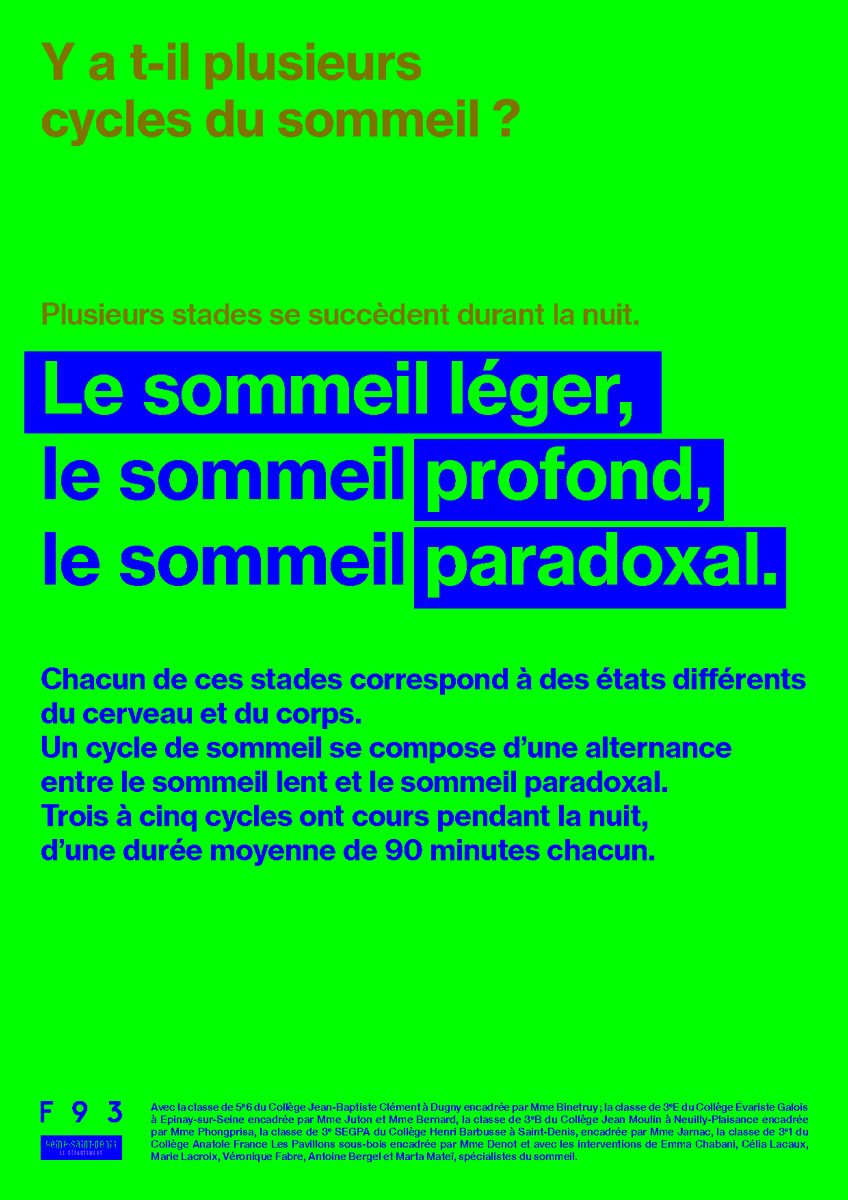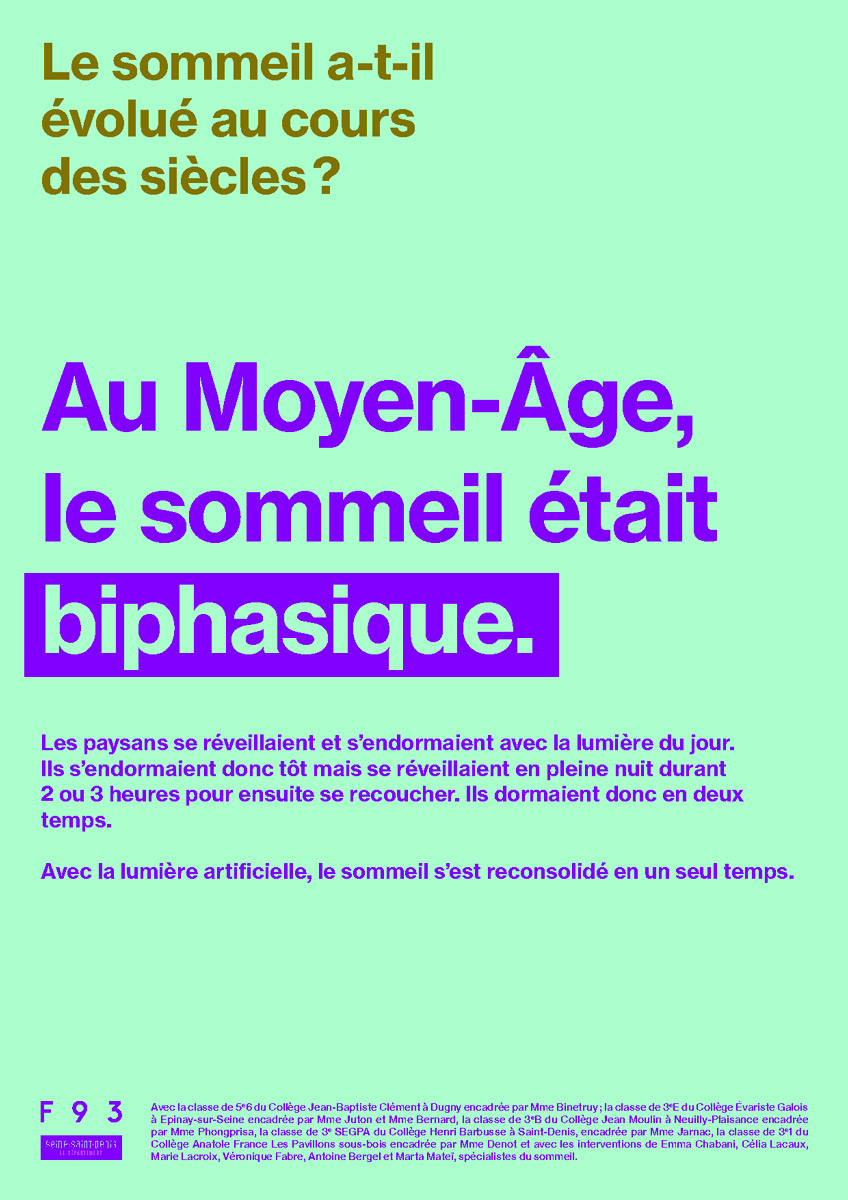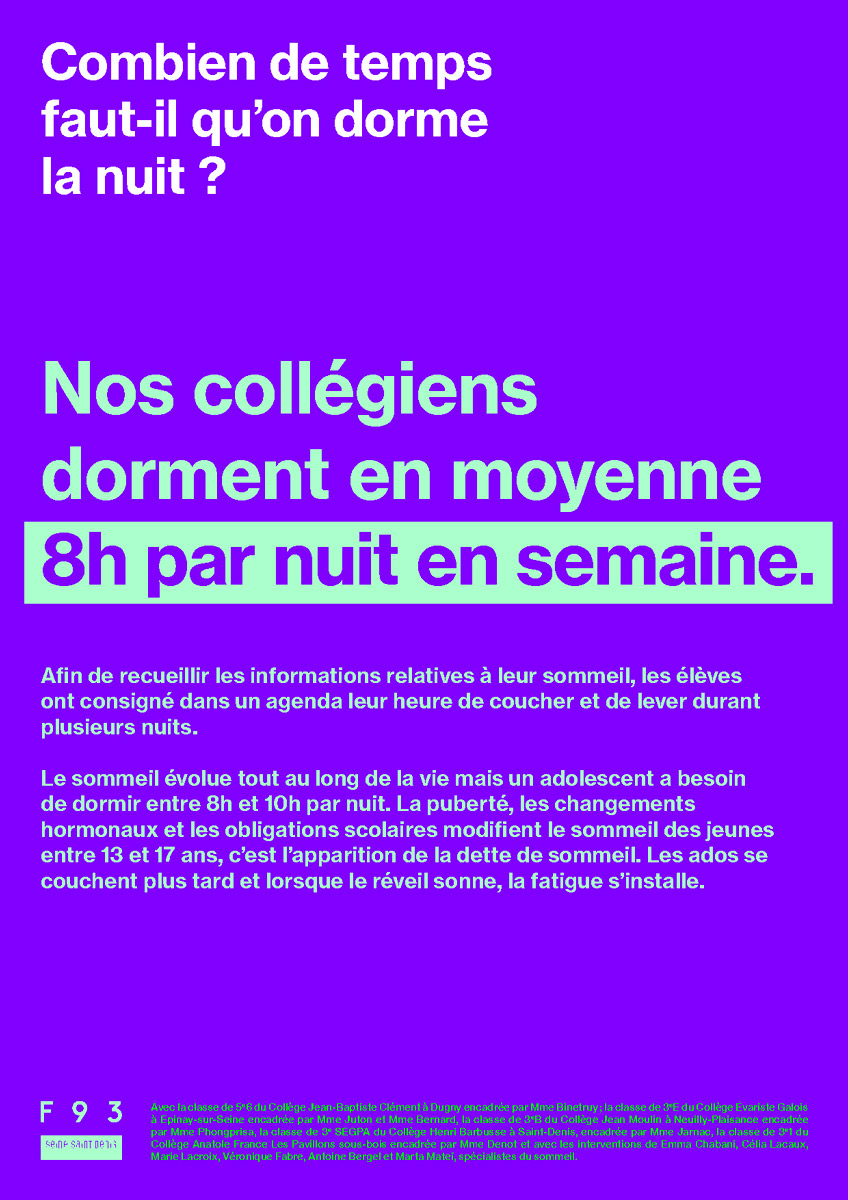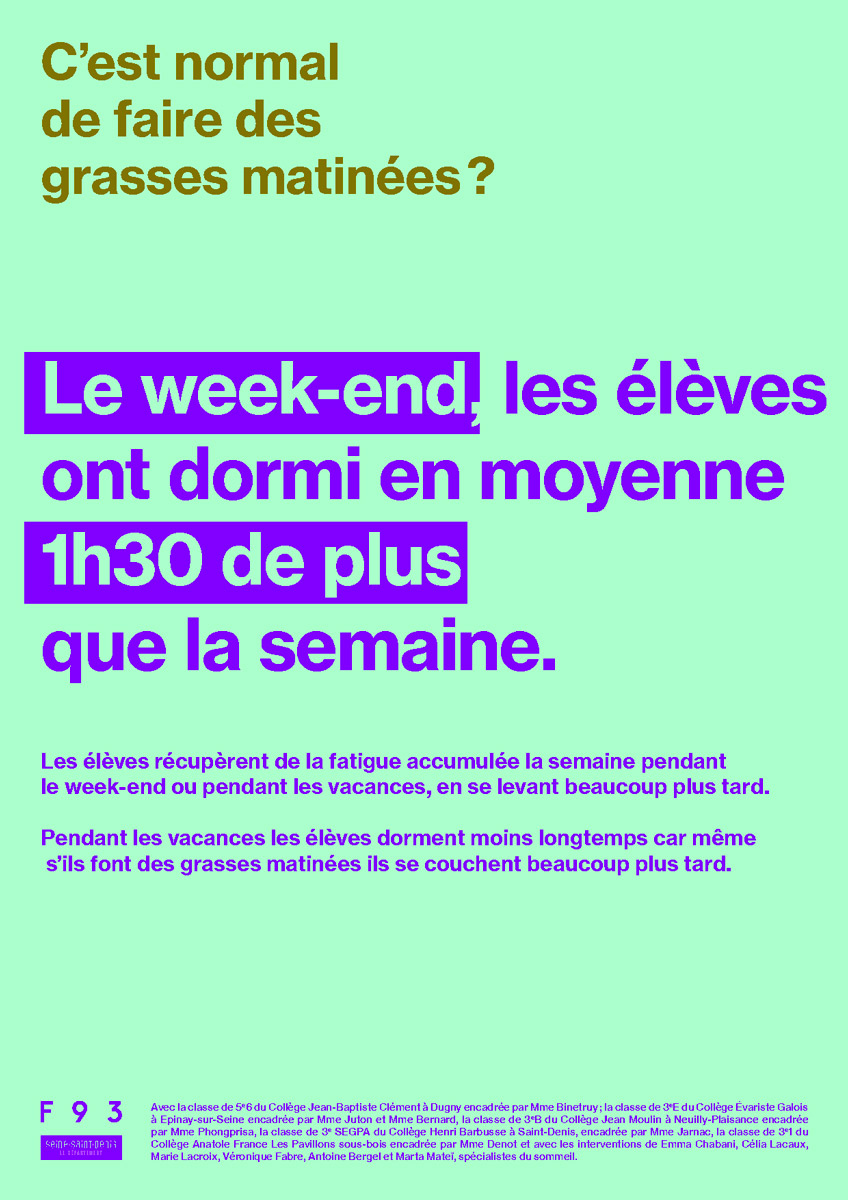Deep Sleep
Since 2009, the Seine-Saint-Denis County Council has been backing “la Culture et l’Art au Collège (CAC)”. This project is based to a large extent on the presence in class for several weeks (40 hours) of an artist or scientist whose mission is to engage the students in a process of research and creation.
Contributors:
Biologists, sleep-specialist neurologists
Project Manager:
Lucille Negre
Objectives:
Despite being a key factor for our health, sleep nevertheless remains a very mysterious phenomenon. The aim of this project is to turn the class into a laboratory. To do this, in the classroom and at home, the students are invited to handle instruments to measure sleep. Using experiments conducted with the students, the class explores its own sleep patterns and the issues they raise.
Workshops:
A good night’s sleep
First of all, the contributor introduces the class to the biological functions of sleep and outlines its different cycles (falling asleep, slow-wave or non-REM sleep, deep sleep, REM or paradoxical sleep) and their characteristics.
Day and night
If sleep varies over the course of our lives, what is its importance at our students’ age? The class keeps a sleep journal for several weeks so that it can create a sleep profile for each student. They record various elements: what time did they go to bed/get up? What do they do before going to sleep? At what time of day do they feel tired? By analysing these sleep journals, the students try and understand the role of sleep in their everyday tasks: concentration, memorising, learning.
What do our bodies do when we sleep?
To answer this question, the students begin an experimental protocol. Using equipment supplied to the group (headset to record brain activity, a device to record the body’s movements), they record their activity during the night: oxygen consumption, heart rhythm, muscle tone, sensory perception, eye movements and body temperature. The students note the information gathered and compare it with the sleep cycles.
Restless
The class gathers together all the data it has collected over the year. Having studied individual data, they then examine the collective data. What do we learn when we study the sleep not of an individual but of the entire class? The group is introduced to recent studies of French people’s sleep and compares them to its own findings: are they average? On average, we sleep about an hour and a half less per night than people did 50 years ago. Why? And what are the consequences of lack of sleep?
Participating Schools:
- JEAN BAPTISTE CLÉMENT, DUGNY
- EVARISTE GALOIS, EPINAY SUR SEINE
- ANATOLE France, LES PAVILLONS SOUS BOIS
- HENRI BARBUSSE, SAINT DENIS
- JEAN MOULIN, NEUILLY PLAISANCE
Photos: DAMIEN DELDICQUE, JÉRÔME AUBRY & ALEXANDRE SCHUBNEL, LABORATOIRE DE GÉOLOGIE DE L’ENS PARIS.
